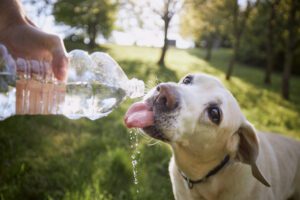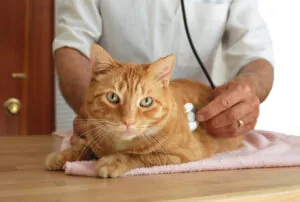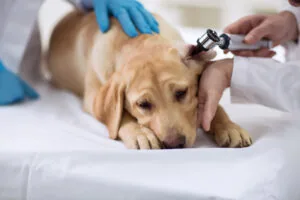10 Steps to Keeping Your Senior Pet Healthy and Happy

You want your dog or cat to live the longest, healthiest, and happiest life possible. This means taking proper care of her at every stage of her life. When your pet becomes a senior (for cats, this is between ages 11 and 14, and for dogs it is usually between 7 and 11, depending on breed, size and genetics), there are some steps you should take to assure the ongoing health of your pet.
Step 1: Visit the vet. Regular check-ups are very important to your pet’s well-being, and become even more so as your pet ages. Senior pets are advised to see the veterinarian every six months. Because age-related diseases can be subtle, symptoms may be easy to miss. Regular check-ups and exams can establish what is normal for your pet, so anything abnormal can be easily detected.
Step 2: Adjust her diet. Older pets are generally less active, meaning that they’ll need fewer calories. Over half of American pets are overweight, and obesity contributes to many preventable diseases. Speak to your veterinarian to see if your pet needs a specially designed weight plan, or if he needs to supplement his diet with any vitamins or minerals.
Step 3: Give him some extra love. As your pet ages, physical contact is more important than ever, for reasons other than simply extra attention. Therapeutic massage is good for animals with joint pain, and additional brushing is great for pets that have a difficult time grooming themselves.
Step 4: Stimulate her mind. Yes, you can teach an old dog (or cat) new tricks! Engage your pet in interactive play, and give her toys that encourage her to problem solve (such as the “puzzle” toys that have treats hidden inside for her to find).
Step 5: Understand his limitations. Older dogs and cats may develop arthritis or other joint problems, making it harder for them to get around. By providing ramps, you can help them navigate around the house, get up on the bed, get to the litter box more easily, and get outside. Senior pets may also experience loss of sight and/or hearing. If this is the case, you should remove any dangerous objects from their path and utilize pet gates for when you are not able to supervise.
Step 6: Pay close attention to her teeth and gums. Dental disease is painful and may make it difficult for your senior pet to eat. You should brush your pet’s teeth as often as possible, and schedule regular veterinary exams and professional dental cleanings to ward off any potential problems.
Step 7: Continue to exercise Exercise is great for all kinds of things: it helps your senior pet maintain a healthy body weight, and it helps slow the degeneration of joints from arthritis. Walking and swimming are terrific, low-impact exercises. Make sure to take it slow and to always supervise your pet. Playing quick games of fetch or having your cat chase a string are good options as well; just be sure not to overdo them. A few times a week is perfect.
Step 8: Update his bed. Because your pet’s joints and bones will be more susceptible to arthritis and injury, it’s important to provide him with a bed that suits his needs. Orthopedic pet beds provide a denser form to help cushion your senior pet’s aging body, and some can even be outfitted with a heat and/or vibration system, which increases circulation and reduces stiffness. Besides this option, you can provide soft blankets and towels to his existing bed.
Step 9: Watch for changes in behavior. Changes in your pet’s appetite and water consumption, urinary and bowel habits, and alterations in sleep routines can indicate an underlying issue unrelated to aging. Also notice any personality changes, such as if she’s becoming irritable or lethargic. You should schedule a visit with your veterinarian if you notice any changes in your pet’s routines or behaviors.
Step 10: Don’t assume problems are due just to old age. Just because your pet is now a senior doesn’t mean that any physical or behavioral changes are related to old age and not a medical problem. The culprit may be metabolic issues like diabetes, obesity, hyper- or hypothyroidism, or Cushing’s or Addison’s disease. Whether the issue is age-related or not, it’s still imperative to bring your pet to the veterinarian for an exam if a problem should arise.
. . .
By following these steps, you’ll be providing your senior pet with the care he needs to continue living a happy and healthy life!
Share This Post
Recent Posts
About Shallowford Animal Hospital
Shallowford Animal Hospital and The Pet Spa at Shallowford are dedicated to the exceptional, compassionate care your pet deserves. Pets hold a very special place in our families, and we treat yours like our own.



